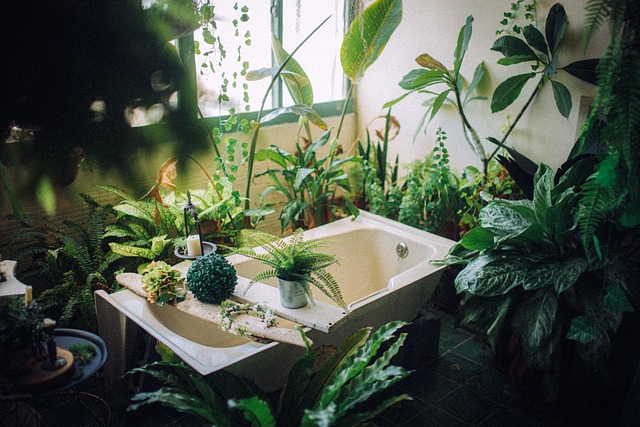The future of smart bathroom design revolves around seamless technology integration, user-centric interfaces, and privacy assurances. By offering voice-activated mirrors, automated lighting, heated floors, and compatibility with existing home systems, smart bathroom tech aims to adapt to users' routines. Industry standards and communication protocols like Zigbee and BLE enable hardware compatibility, facilitating a unified smart bathroom ecosystem. Software integration allows devices to work cohesively, automating tasks and providing personalized experiences. Accessibility features and robust privacy protections build user trust, transforming the smart bathroom design into an inclusive, secure, and engaging personal sanctuary.
In today’s digital era, a seamless smart bathroom experience is no longer a luxury but an expectation. As smart bathroom technology integrates with our daily routines, ensuring compatibility across devices becomes paramount. This article explores user expectations and delves into critical components, standards, and software integrations to create a harmonious smart bathroom design. We address common connectivity challenges and emphasize accessibility, privacy considerations, all while revolutionizing the way we interact with our bathrooms.
Understanding User Expectations for Smart Bathroom Technology
In the realm of smart bathroom design, setting the stage for a seamless user experience means aligning technology with everyday expectations. Today’s consumers are accustomed to devices that adapt to their needs and preferences, offering intuitive interfaces and consistent performance across various platforms. For smart bathroom technology to truly shine, it must meet these heightened expectations. Integrations like voice-activated mirrors, automated lighting, and heated floors should not only be functional but also seamlessly integrate with existing home automation systems for a unified control experience.
User interactions in the bathroom are intimate and personal, so privacy and security are paramount. Expectations for secure data handling and encryption are higher than ever, especially when smart devices collect and store sensitive information like usage patterns or health metrics. Ensuring compatibility across devices and platforms not only enhances convenience but also fortifies trust, enabling users to embrace the connected bathroom experience with confidence.
Hardware Compatibility: Essential Components and Standards
In the realm of smart bathroom design, hardware compatibility is a cornerstone for achieving a seamless experience across devices. Essential components include sensors, actuators, and control units that must seamlessly integrate with each other and adhere to industry standards. These standards ensure that devices from different manufacturers can communicate and function together without hiccups. For instance, utilizing common communication protocols like Zigbee or Bluetooth Low Energy (BLE) facilitates connections between smart mirrors, automated fixtures, and voice assistants, creating a cohesive smart bathroom ecosystem.
Moreover, hardware compatibility involves considering physical dimensions, power requirements, and material compatibility to prevent issues in installation and maintenance. By focusing on these aspects, designers and manufacturers can ensure that the smart bathroom design is not just technologically advanced but also practical and durable. This attention to detail is crucial for providing users with a consistently reliable and enjoyable experience in their updated bathrooms.
Software Integration: Seamless Communication Between Devices
In the realm of modern living, particularly with the advent of smart bathroom design, achieving seamless communication between devices is paramount for a truly integrated and compatible experience. Software integration plays a pivotal role in ensuring that your bathroom ecosystem functions cohesively. For instance, a smart mirror could display real-time information like weather updates and news while communicating with your voice-controlled speaker to play soothing morning music as you get ready. This interconnectedness extends to smart appliances, allowing your smartphone app to control the water temperature of your shower or adjust the lighting to set the perfect ambiance for a relaxing bath.
This seamless interaction isn’t just about convenience; it’s about creating an environment that adapts to your routines and preferences. By integrating software across devices, you can automate tasks, receive personalized recommendations, and enjoy a cohesive smart bathroom design experience that enhances your daily rituals. Whether it’s through voice commands or intuitive mobile apps, this connectedness ensures that every aspect of your bathroom is tailored to your needs, promising a truly modern and efficient lifestyle.
Addressing Common Connectivity Challenges in Bathrooms
Designing for Accessibility and User Privacy Considerations
In the realm of smart bathroom design, accessibility and user privacy are paramount. When creating spaces that integrate technology for enhanced comfort and convenience, it’s crucial to ensure these features cater to a diverse range of users, including those with disabilities. This involves thoughtful considerations like incorporating adjustable fixtures, touchless sensors, and accessible controls to accommodate different physical abilities.
Privacy is another critical aspect, especially when smart devices are involved. Users must feel confident that their personal data, such as usage patterns or health-related information, is secure and protected. Transparent privacy policies and the use of encryption technologies can help build trust, ensuring individuals feel at ease while utilizing connected bathroom devices, be it smart mirrors, automated faucets, or temperature controls in their homes.
In the pursuit of a truly intelligent and user-friendly smart bathroom design, ensuring compatibility across devices is paramount. By implementing standard hardware components and fostering seamless software integration, we can overcome common connectivity challenges unique to bathroom environments. Considering accessibility, privacy, and addressing user expectations sets the foundation for an immersive and personalized experience. When these elements align, the result is a connected bathroom that enhances daily routines without compromising on comfort or security.
